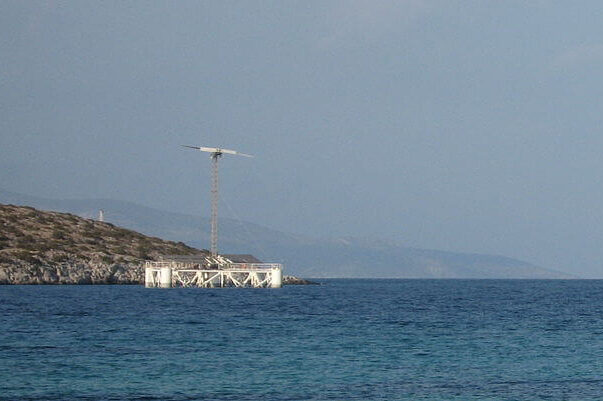
Oneka Technologies, a Canadian start-up, is at the forefront of innovation in addressing the global demand for fresh water through its development of floating desalination systems. These systems, in contrast to traditional shore-based desalination plants, harness the energy of ocean waves to convert seawater into fresh water.
The chief innovation officer of Oneka Technologies, Ms Susan Hunt, spearheads the initiative to make water desalination more sustainable and accessible.
“The ocean is an unforgiving place,” says Ms Hunt. “But our technology is designed to operate there – it goes up and down in the waves, all day and all night.”
“Desalination facilities are conventionally powered by fossil fuels,” says Ms Hunt. “But the world has certainly reached a pivot point. We want to move away from fossil fuel powered desalination.”
The International Desalination Association reports that over 300 million people worldwide depend on desalinated water, sourced from more than 21,000 plants—an almost twofold increase in the last decade. With approximately half of the global population experiencing highly water-stressed conditions for at least one month annually, and projections indicating a 9% annual growth in the desalination sector until 2030, the demand for innovative solutions is pressing.
Two predominant techniques, thermal and membrane-based (reverse osmosis), are currently employed for seawater desalination. Thermal desalination involves heating seawater until it evaporates, a process known for its high energy consumption. The membrane-based approach, while less energy-intensive than thermal methods, still requires a considerable energy input. Both methods often rely on non-renewable energy sources, contributing to carbon dioxide emissions.
Oneka’s floating desalination machines take a different approach. These buoyant systems, anchored to the seabed, utilise a membrane system powered exclusively by wave motion. As waves pass, the buoys absorb energy, converting it into mechanical pumping forces.
Approximately a quarter of the seawater drawn in is pushed through the desalination system, producing fresh water that is then transported to land through pipelines using wave-generated power.
“The tech uses no electricity,” says Ms Hunt. “It is 100% mechanically driven.”
The remaining three-quarters, including concentrated saltwater or brine, is mixed and released back into the sea. The system’s modular design allows multiple buoys to be anchored together, and it is designed to be marine-life friendly.
“It’s only about 25% saltier than the original sea water,” says Ms Hunt. “It’s a much lower concentration of brine compared to traditional desalination methods.”
Oneka’s floating desalination units, operational in waves as low as one meter, are set to enter the commercial market in the coming year. With three available sizes, the largest of which measures 8m by 5m, these buoys have the capacity to produce up to 49,000 liters (13,000 US gallons) of drinking water daily.
In the Netherlands, another company, Desolenator, employs a different renewable energy source for desalination—solar panels. These panels generate heat and electrical energy, powering a thermal evaporation system. Excess energy is stored in batteries, ensuring uninterrupted desalination even during the night. Unlike traditional methods, Desolenator collects all the salt produced for commercial use and does not release brine back into the sea.
“Brine has long been a headache in desalination,” says Lauren Beck, the firm’s head of projects. “Essentially it’s a waste product. We crystallise the brine to produce high value salt.
“And because we don’t use any harmful chemicals this is a very pure, high quality salt that can we sold for any kind of industrial use. This is really focusing on the circular economy approach.”
Louise Bleach, Vice President of Business Development at Desolenator, emphasises the increasing value of fresh water due to global shortages. This underscores the importance of sustainable desalination practices in ensuring a reliable water supply.
“You hear people talking about water like it’s the next oil,” she says.
Chedly Tizauoi, a professor of chemical engineering at Swansea University, acknowledges the strides made in renewable energy-powered desalination systems but underscores the critical importance of water conservation. While innovative solutions address the growing demand for fresh water, a simultaneous focus on reducing overall water consumption remains essential to achieving long-term sustainability.
“Use less water, only when you need it,” he says. “The energy needed to pump water, the chemicals used to treat it. These are important considerations when turning on the tap.”
——————————————————————————
At Natural World Fund, we are passionate about stopping the decline in our wildlife.
The decline in our wildlife is shocking and frightening. Without much more support, many of the animals we know and love will continue in their decline towards extinction.
When you help to restore a patch of degraded land through rewilding to forests, meadows, or wetlands, you have a massive impact on the biodiversity at a local level. You give animals a home and food that they otherwise would not have had, and it has a positive snowball effect on the food chain.
We are convinced that this is much better for the UK than growing lots of fast-growing coniferous trees, solely to remove carbon, that don’t actually help our animals to thrive.
This is why we stand for restoring nature in the UK through responsible rewilding. For us, it is the right thing to do. Let’s do what’s right for nature!
Donate today at https://naturalworldfund.com/ and join in the solution!

